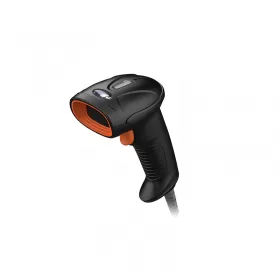When to Use premium printer?
First...to equippaint...I don't have any experience directly with cast vs digital so not sure "silly" is the word I'm looking to describe my situation and that's why I'm asking.
I don't have flat bed so once I pay wholesaler and get a 4' x 8' sign made/crated & shipped don't think it'll be cheaper. I think it'll be more.
Looks like cast is the winner by wide margin. Glad to hear it because that's what I'd prefer to do. Thanks to all for your time and help! dm
Yes, it can be done.
One of the things I hear frequently is that you can’t use ink jet prints with photo transfer that it has to be a laser print (toner based).
I’m not exactly sure why so many people believe this, nor how it started, but I’m here to tell you that both my Epson R2880 inkjet printer and my Canon Pixma inkjet printer work beautifully for image transfers. These are the two printers I use to teach my workshops and I never have problems.
Although you can certainly still do transfers using a toner based laser printer, I personally like using an ink jet print for transfers because I can rub off more of the paper and leave less paper residue on the wax.
To begin, when you prepare your board, there are two equally important things to remember.
- You MUST have a smooth surface.
- You MUST be transferring your image onto a wax surface that is free of oils (oil paint, pigment sticks, etc)
Since this is a transfer process you want to make sure that you prepare your file with the mirror image so when you lay it upside down on your substrate it will reverse the image to your preferred orientation.
After I’ve ‘flipped’ the image I print it on an inkjet printer using Epson’s Ultra Premium Presentation Matte photo paper.
Here is an example of a board with a gold wax finish on it.
The wax on your substrate should be slightly warm. If it has been sitting for a period of time, hit it again with the heat gun or torch.
Place your image upside down on your substrate. Make sure that your wax isn’t too warm so that it doesn’t gouge the surface with indentations as you burnish.
You can use the back of a spoon to burnish, placing two spoons together, to shield yourself from the heat of the friction. (If you decide you love this process you may want to invest in a printmakers burnishing tool.)
It’s impossible for me to tell you how long to burnish or how much pressure to apply. This has to be trial and error. If you don’t burnish enough the ink will lift when you remove the paper.
There is no harm in burnishing too much.
Now put water on the back of your image….enough to cover the image, but not too much. Let it sit for 30 to 60 seconds.
Begin rubbing firmly with your fingers. If the paper is too dry add a little water with your fingers. The paper will rub off slowly at first, but once you get it started it will remove much easier. The amount of pressure you use will have to be trial and error on your part. Rub too hard and the ink will lift up with your force. Rub too softly and it will take too long and the inks will start to break down with the water.
Further reading:Consumer Electronics
Do Barcode Scanners Use Infrared?
Outdoor Readability with LCD Optical Bonding: A Game-Changer for Devices
How Do I Choose an LED Video Wall?
Key Factors to Consider When Choosing an Industrial Touch Screen Monitor
60 vs. 72-cell Solar Panels: Which Size is Right for You?
How Are Barcode Scanners So Accurate?
I’ve found that using a photo paper allows me to remove the paper easier than toner prints with copy paper.
Once it’s dry you will need to put a layer of medium over the image and fuse.
And then the fun begins with adding texture, pigments, etc.
Hints: If you get a bunch of pot marks where the image didn’t transfer, rub your finger lightly over it and see if you can feel the davit. The ink jets from the print will not be able to be burnished into divots. That’s why you need an incredibly smooth surface to begin.
Also, for this to work make sure your printer uses pigment inks and not dye based inks. Technology is always changing (as I’m sure we all know) but generally dye based inks consist of colorant that is fully dissolved in a liquid. These inks are lower in costs with the disadvantage that they are water soluble, where a drop of water could ruin a print. And the prints fade faster and are therefore not considered archival. Pigment ink consists of very fine powder of colorant in a liquid carrier, is archival, and stands up to the small amount of water used to rub off the paper from a photo transfer.
To find out if your printer is pigment or dye based, you’ll want to do some research online or contact the manufacturer of your printer directly.
So tell me, what has your experience been with using ink jet prints for photo transfers? Do you prefer one process over the other (toner based vs inkjet)?
Be well….be creative,
When to Use premium printer?
Busting the Myth: Using Ink Jet Printer for a Photo Transfer
Suggested reading:How much do you tip for a guided tour?
How Much Should I Tip My Guide? We Asked Guides How ...
Should You Tip US Tour Guides? (Simple Formula)
What is better tower or all-in-one?
Best tablet 2023: the top tablets you can buy right now
What price tag solution should I choose for my business?
How Long Will a Power Bank Hold Its Charge?


